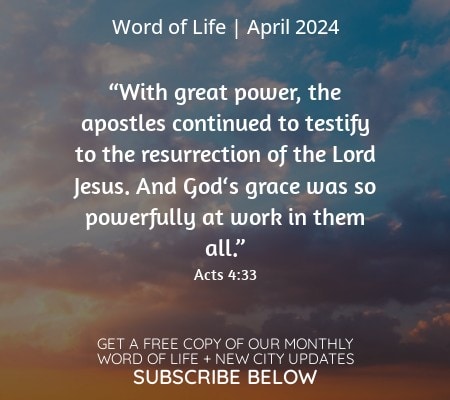“That all may be one. We were born for these words of unity, to contribute to making them a reality in the world,”- these words of Chiara Lubich with
a comment by Bishop Felix Liam, President of the Episcopal Conference of Myanmar, on the first day of the meeting (1- 4 June 2017), laid out the aim of the convention held this year in Yangon, Myanmar.
These annual conventions held every year at international, ecumenical and regional levels, began about 40 years ago through the initiative of Chiara Lubich herself, and Klaus Hemmerle (1929-1994), then Bishop of Aachen, Germany…
In Yangon, with a strong presence of the episcopate of Myanmar (19 bishops), a warm family atmosphere prevailed among the 31 participants, a good number of whom came from the Philippines, India, Malaysia and South Korea.
In communicating his experience on his encounter with the spirituality of unity, Cardinal Francis Xavier Kriengsak of Bangkok, moderator of the bishop-friends of the Focolare, invited the bishops to discover and deepen one of the fundamental points of the spirituality of unity: Jesus crucified and abandoned, and to place him in the center of their lives in order to become instruments of communion in the Church and humanity.
Experiences from the Focolare’s local community members bore witness to this. Moreover some some bishops, like the Irish Bishop Brendan Leahy, discern in the mystery of Jesus forsaken, the “countenance of mercy, key to dialogue and unity, and a pathway to the sanctity of the people.”
The life of Bishop Klaus Hemmerle was conveyed through a PowerPoint presentation and brief videos that showed the amazing fruitfulness of his love for Jesus Forsaken even in the most “critical” situations. The themes on Evangelization and Inculturation according to the spirituality of unity, given by Fr. Andrew Recepcion, President, of the International Association of Catholic Missiologists (IACM), were quite relevant and triggered particular interest in a country which is mostly Buddhist.
The story of Chiara Lubich and the Movement she had given life to, along with the experiences of the members of the local community, was very moving. Cardinal Carlo Bo, archbishop of Yangon said: “I was much impressed by the story of the charismatic and prophetic life of the founder of the movement. More than ever the Church needs movements like the Focolare. While the arrogance of power divides people according to colour and race, Chiara has created a global communion for worldwide peace.”
“While the arrogance of power divides people according to color and race, Chiara has created a global communion for worldwide peace.” (Cardinal Bo, Archbishop of Yangon)
Bishop Matthias (Myanmar) observed: “When one usually participates in a meeting of bishops, one listens to many things, but on an intellectual level. Instead, here we talk about life and we see happy people.” And Bishop Isaac (Myanmar):“The life of a bishop is not easy, and we ourselves often feel abandoned. Now that I have met Jesus Forsaken, I will have the strength and the light to go ahead.” From Korea, Bishop Peter added: “It is the first time that I participate in a meeting of bishops. Here I saw people who try to love Jesus Forsaken in every difficulty; people who are behind the scenes, trying to serve all of us,” referring to the Movement’s local community members.
Openness to cultural and interreligious dialogue was symbolized by the golden colours of the Pagoda of Shwedagon, the most important and renowned in the capital, and in which the relics of the four Buddhas are jealously guarded. The visit to this sacred place on the hill of Singuttara, to the west of Royal Lake, was a gesture of respect for the Buddhist soul and the culture of the place. At the top of the Pagoda, a banner-like anemoscope scattered with precious stones, displays the direction of the wind. When sufficiently supported, its fluttering is accompanied by the sound of tiny bells.
The Myanmar bishops are certain in which direction the wind is blowing: in the direction of unity, towards a Church which is increasingly a witness of
“communion”.




